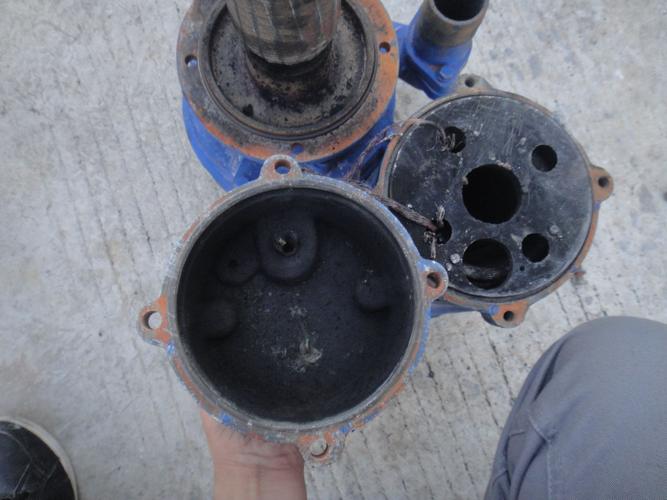Failures and treatment methods of submersible sewage pumps
Submersible sewage pumps may encounter some faults during use. These faults and their treatment methods can usually be summarized as follows:
Common faults include:
1. No water after starting:
Cause of fault: air in the pump, air accumulation in the water inlet pipe, poor closure of the bottom valve or leakage of the vacuum pump packing, etc.
Treatment method: remove debris, replace damaged rubber pads, change the direction of the valve plate, tighten or replace new packing, increase the filling amount until there is no bubble at the vent plug.

2. The pump does not turn when starting:
Cause of fault: the packing is too tight, the impeller and the pump body are stuck by debris, the pump shaft, bearings are rusted or the pump shaft is bent.
Treatment method: loosen the packing, dredge the water diversion trough, disassemble the pump body to remove debris and rust, remove the pump shaft for correction or replace a new pump shaft.
3. Heating bearing damage:
Cause of fault: too small bearing clearance, bent pump shaft, too tight tape, lack of oil or poor oil quality, etc.
Treatment method: Replace the bearing, install a gasket between the bracket and the bearing seat, adjust the concentricity of the pump shaft or the two shafts, loosen the tightness of the tape, add clean butter and remove the blockage in the balance hole.
4. Insufficient flow:
Causes of failure: speed mismatch, belt slippage, blade installation angle is too small, head is insufficient, pipeline blockage, etc.
Treatment method: Restore the rated speed, remove belt oil, adjust the blade angle, lower the installation position of the pump, and remove the blockage.




